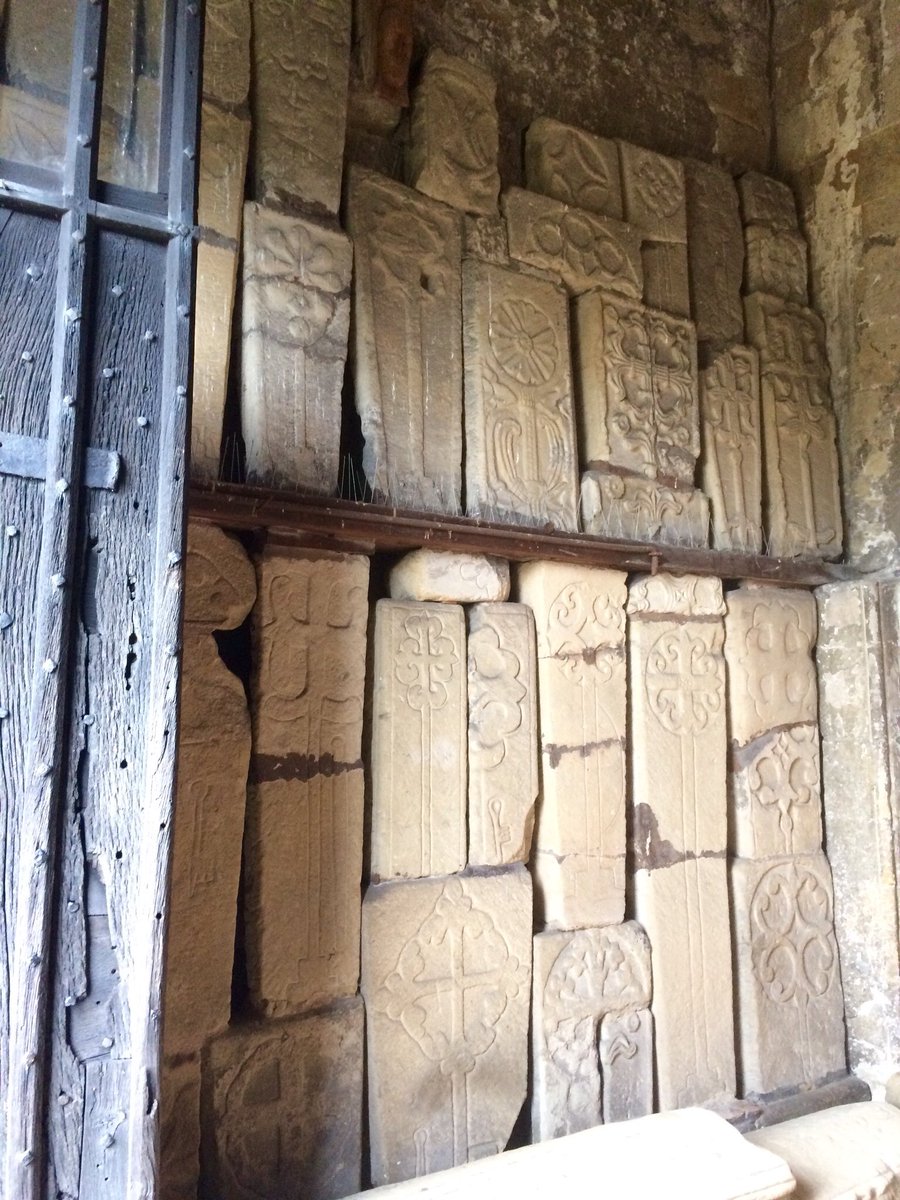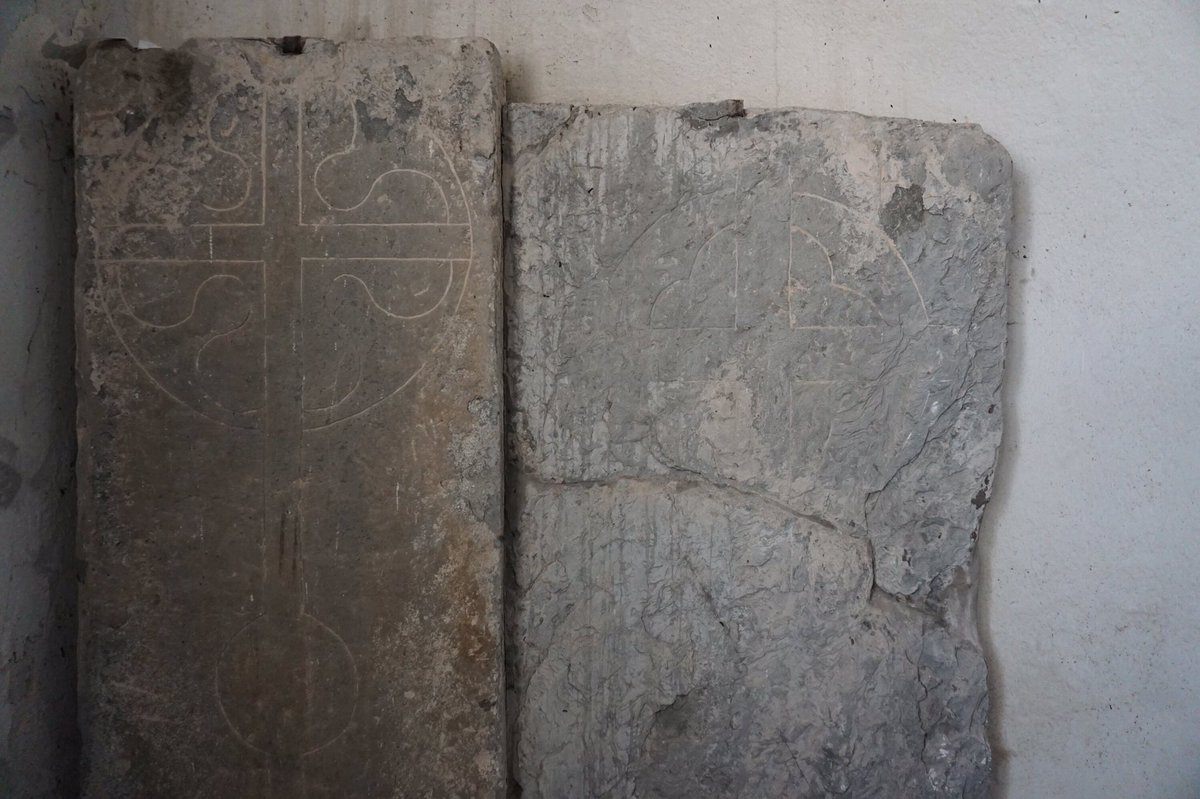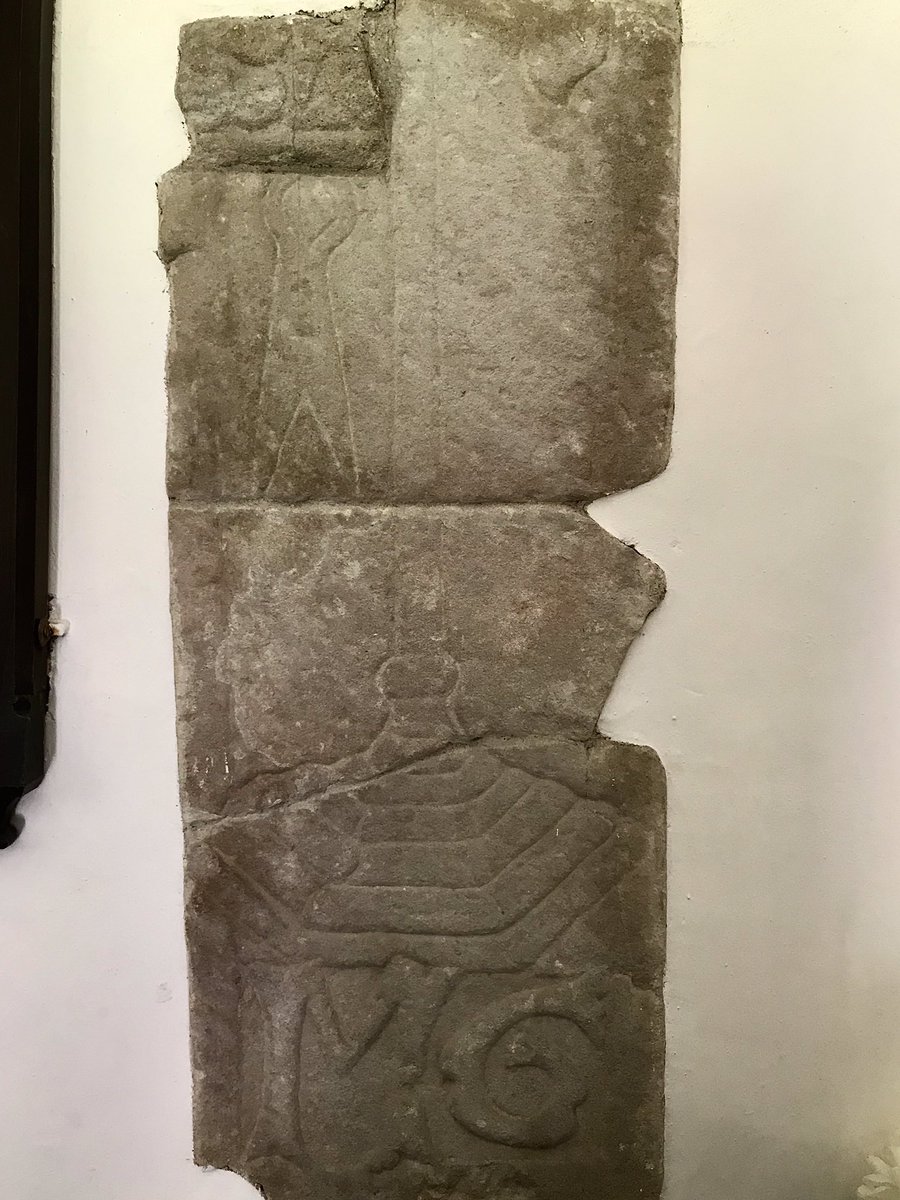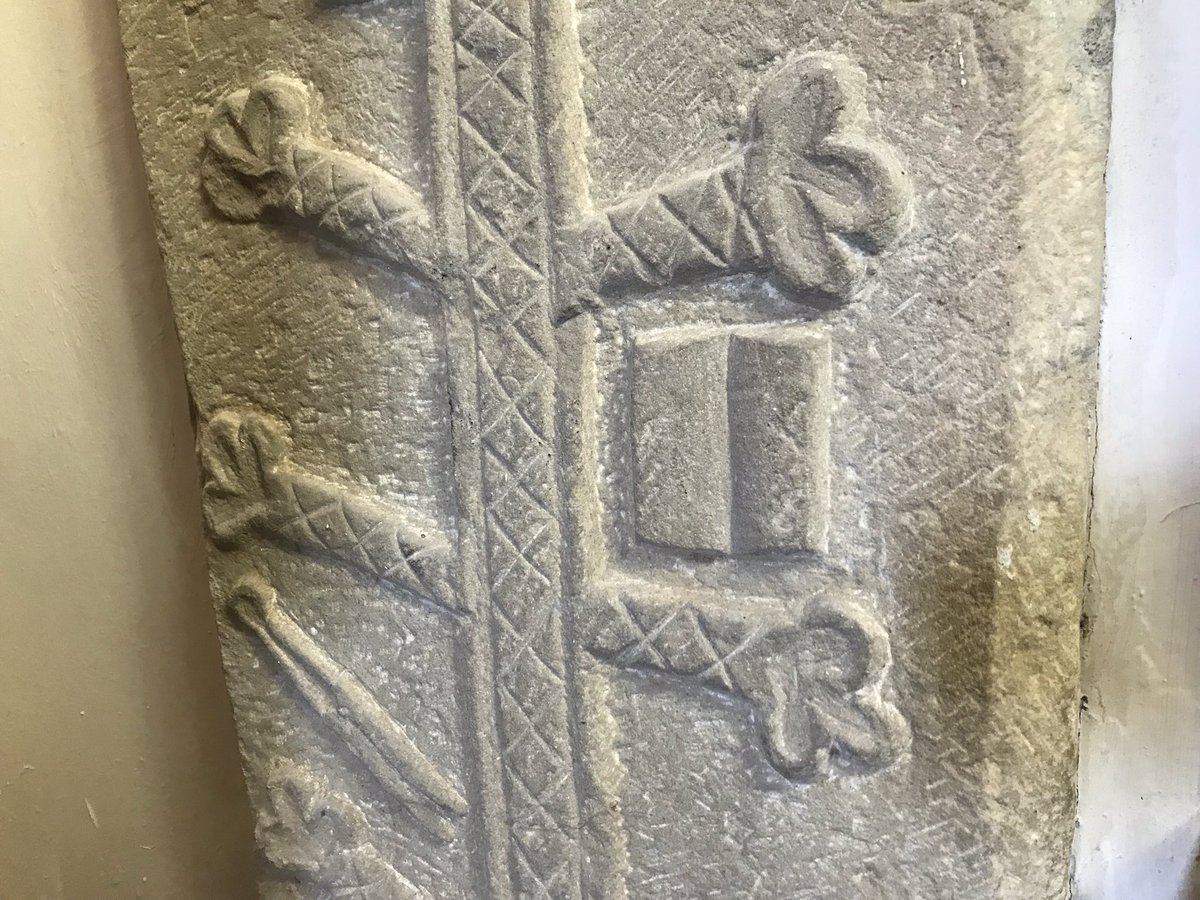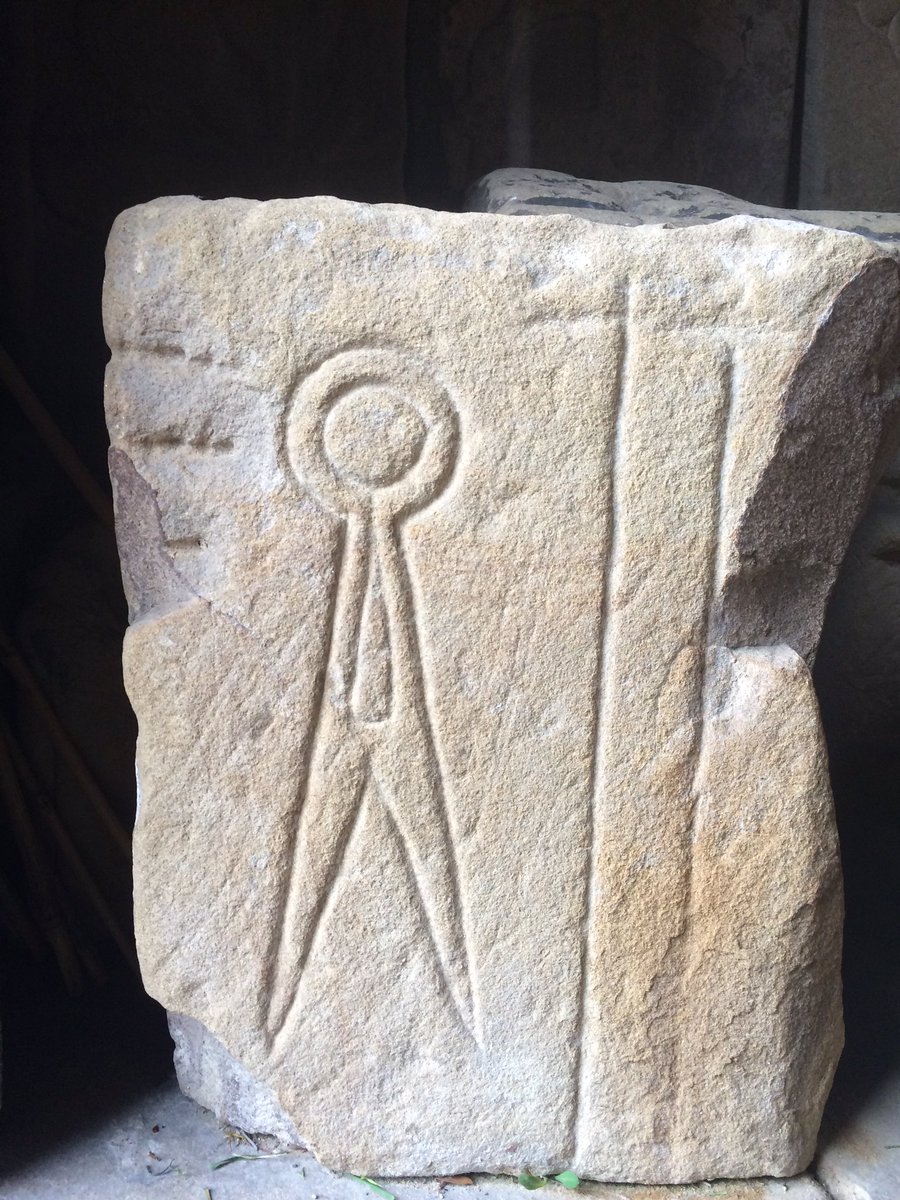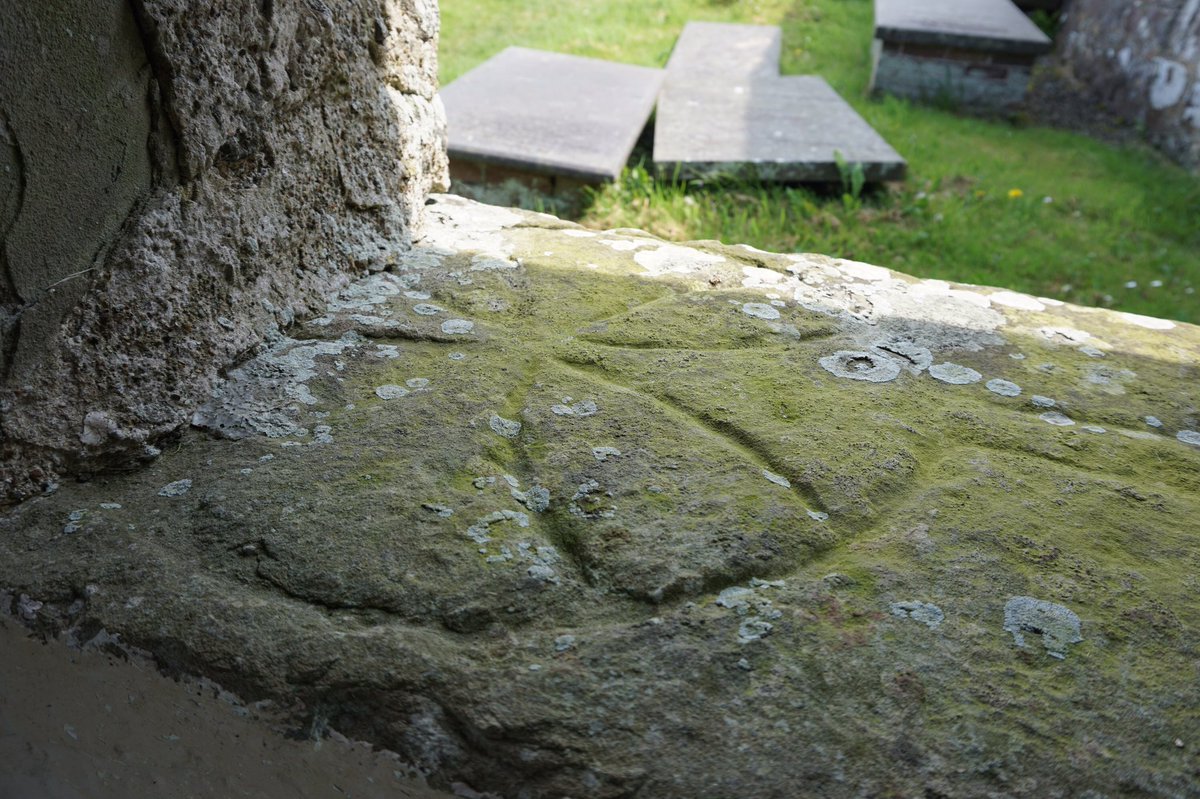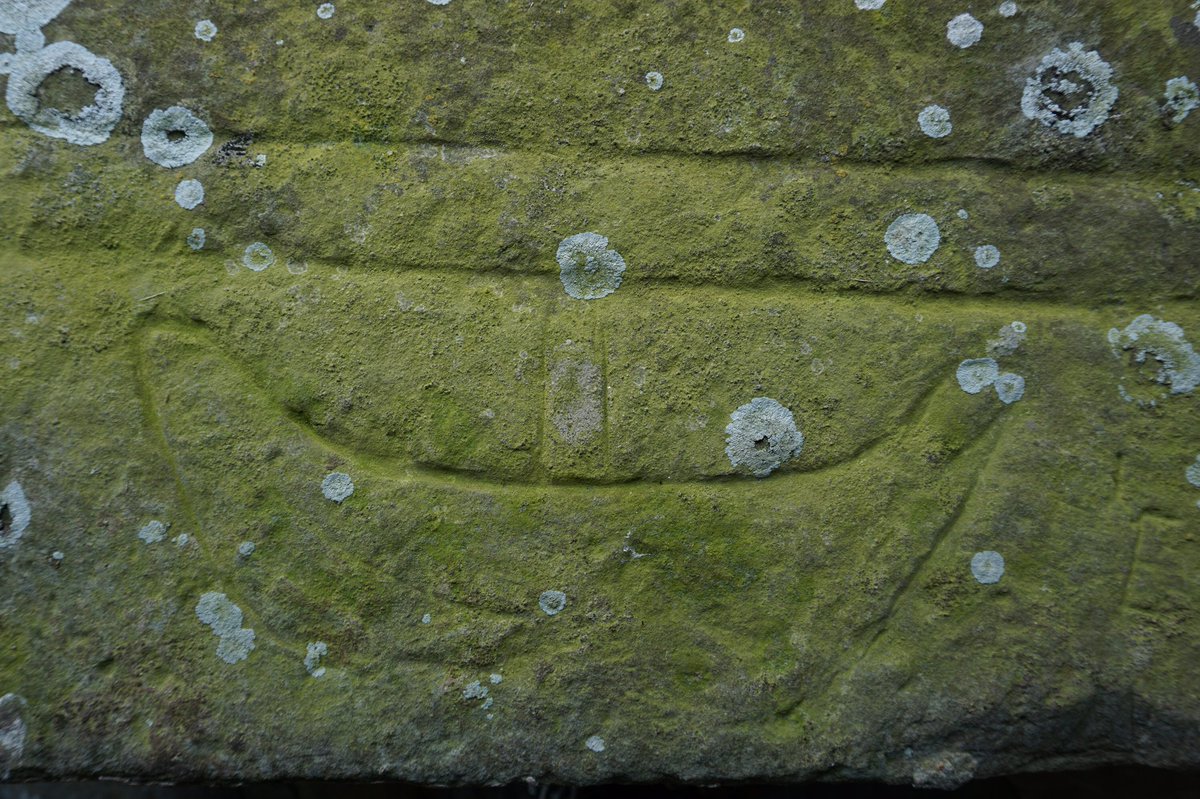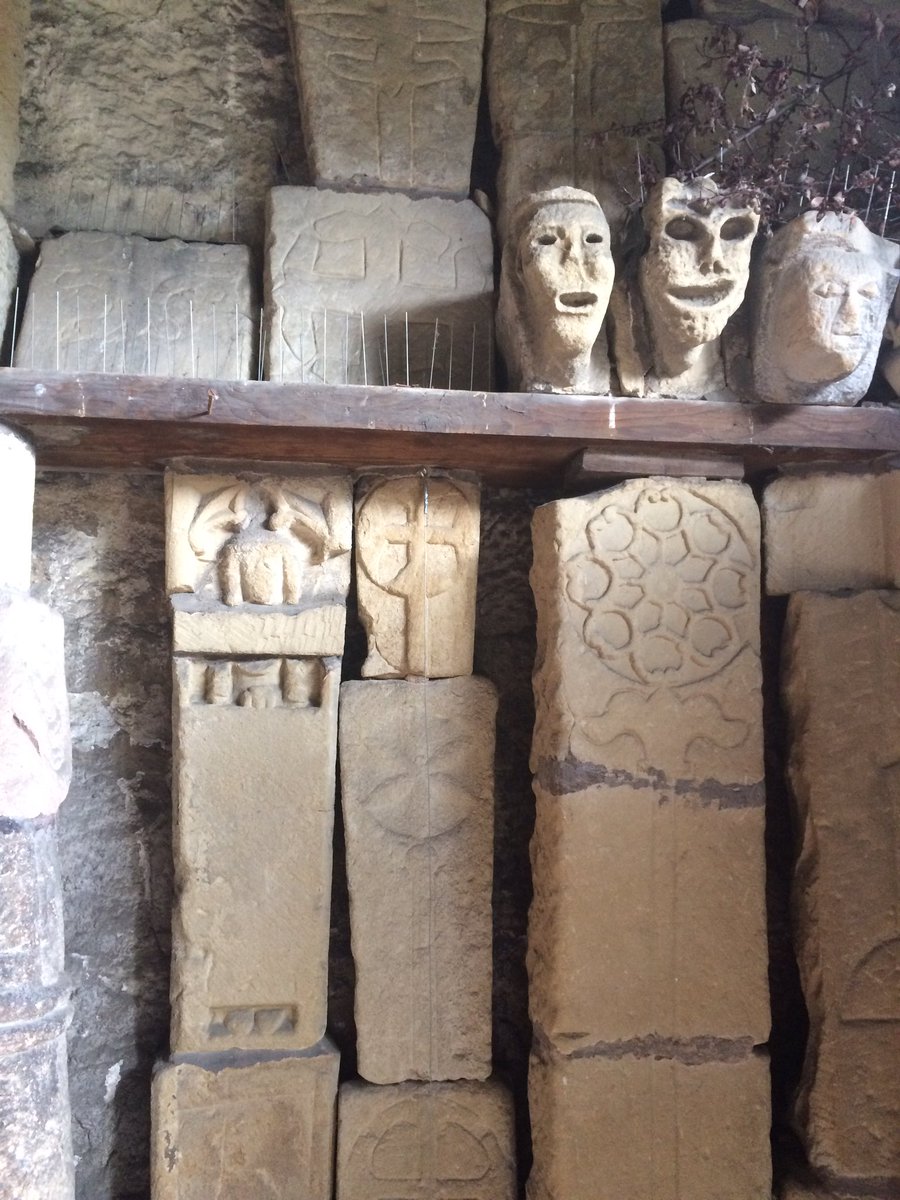In some churches, you’ll find medieval carved stone grave markers known as cross slabs.
Some cross slabs were laid over graves, while others were standing markers. They all get their name from the central cross that is featured on most of these memorials.
#thread
Some cross slabs were laid over graves, while others were standing markers. They all get their name from the central cross that is featured on most of these memorials.
#thread
Two examples, now leaning rather than standing, can be seen at St Decuman's, Rhoscrowther, Pembrokeshire. At All Saints, Bakewell*, Derbyshire, a wall of fragments in the porch showcases a wide variety of cross designs (first photo in this thread).
2/
2/
Many cross slabs also feature other motifs which can tell us something about the person they commemorate. The earliest designs were heraldic and indicated rank, but by the 13th century they symbolised a trade or profession.
3/
3/
For example, at St Andrews, Finghall*, Yorkshire, a cross slab features a book and shears. Shears also feature on a slab at Bakewell. This emblem may have denoted that the deceased was a cloth-worker or wool-merchant.
4/
4/
At St Baglan's, Llanfaglan, two 14th-c cross slabs have been built into the porch. They are both carved with quintessential crosses, but one also bears the image of a ship - possibly in honour of a Llanfaglan mariner, ship builder, or merchant (...or banana importer?).
5/
5/
*denotes churches that are not in our care.
Special thanks to you Matthew, @MedievalG, for his help with this thread.
Let’s have one final photo of All Saints’, Bakewell to finish. An amazing church in the hometown of the eponymous tart, and not far from Chatsworth House.
6/
Special thanks to you Matthew, @MedievalG, for his help with this thread.
Let’s have one final photo of All Saints’, Bakewell to finish. An amazing church in the hometown of the eponymous tart, and not far from Chatsworth House.
6/

 Read on Twitter
Read on Twitter